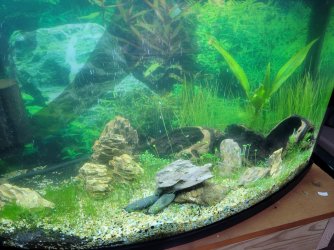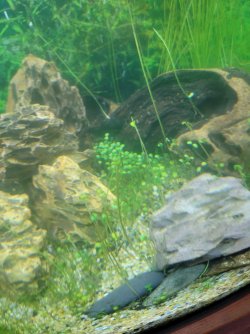Not sure what they are, but nothing in those photos or description alarms me. You used a plant substrate, did you also add live plants to the tank? Transfer anything from any of your other tanks into this one?
Don't be in a hurry to kill them. Remember that what you're setting up here is an ecosystem, not a sterile lab environment. All of our tanks, especially healthy established tanks, have micro-critters of all sorts in them, and most of them are harmless. Many get eaten by the fish, help break down organics into mulm etc, and do no harm at all. My healthiest tank has seed shrimp, tiny detritus worms (which I think I see in your photos) and other stuff in there, the fluttering one you described sounds as though it might be daphnia, a water flea. Again, harmless, and actually a great food source! My tiny newborn pygmy fry seem to largely live on them. They come in by being transferred by my other tanks, via the water, via plants I've added.
When you say that you had a worm problem before that you solved by not over-feeding, I'm guessing you mean that you saw a lot of detritus worms and got worried? Because the types of harmful, parasitic, internal worms that fish can have do need medication to be eradicated. But detritus worms found in the substrate are not harmful and don't need to be killed. They're fine and helpful while down in the substrate, and we just usually don't see them. But seeing a bunch of them climbing the glass or gathering on some old food is definitely a sign that you're feeding too much, since it means there is a lot of leftover food going to waste and causing a population boom in the detritus worm colony. Solving it means cutting back on feeding and increasing cleaning the susbtrate, but not eradicating the worms completely, since they're harmless, helpful and not usually even visible. So they're also a helpful warning system there, and they're no harm to the fish at all.
When you say you're worried that they might be flukes, do you mean gill flukes? I hope that this makes sense and reassures you!
@Colin_T and
@AbbeysDad have been very helpful with issues like this before.



 www.fishforums.net
www.fishforums.net




